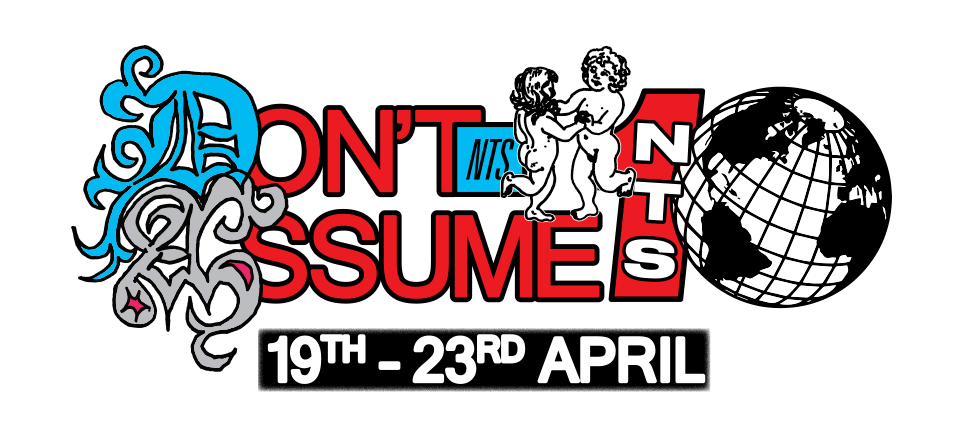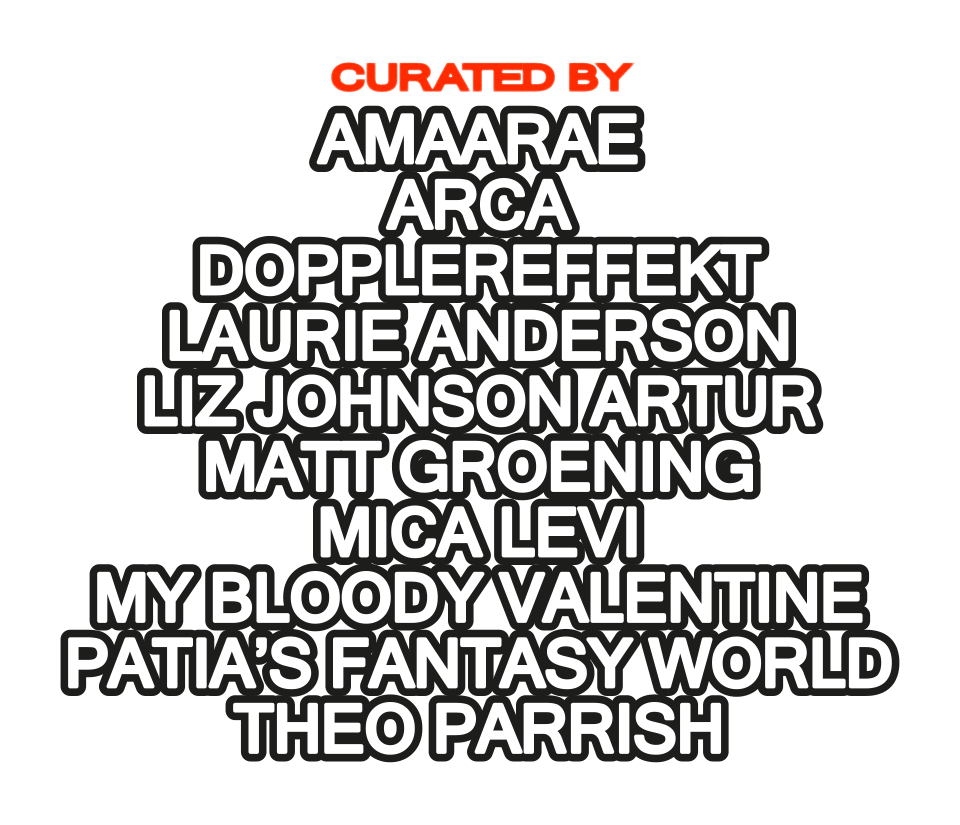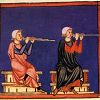NTS 10


Personalised Recommendations
Sign up or log in to MY NTS and get personalised recommendations
Musica Medievil
What do we mean by medieval music?
"Middle Ages" is a word in which a thousand years of history have been compressed, in a thousand years the arts and the aesthetic sense have changed innumerable times: we live in the so-called "contemporary" era which began in 1789, therefore affirming that medieval music consists of only one genre would just kind of be like arguing that Beethoveen and the Sex Pistols are of the same music type. There are not many musical sources that have survived the ravages of time and people, but they are sufficient to be able to attempt historical reconstructions that are often extremely credible and philological, but the awareness that we will never know for sure how music sounded in the Middle Ages remains a fact. The Middle Ages invented most of the things that are still part of our daily lives today: from buttons to banks, from glasses to musical notes, yes, even musical notes! There are many melodies that we can play with some confidence, but what is missing is the rhythm and spirit with which the music was lived and played. The musical transcriptions had the sole purpose of preserving the memory of a melody and the musicians, poets, troubadours or jongleurs if you prefer, performed the entire repertoire, words and music, by heart. The situation was different about sacred chant, the church in fact owned an evolved written culture and religious chants could boast of adiastematic musical notations since ancient times, then the lines forming gradually the staff evolved together with the neumes, showing us clefs and pitches. It is only thanks to copyists from monasteries, as well as brilliant personalities such as Guido D'Arezzo, who lived in the 11th century, that today we know many medieval melodies, necessary to be able to reconstruct the sound of the Middle Ages.
The musical selection created for NTS Radio was conceived in chronological order starting from the first musicians-researchers who investigated the manuscript sources, restoring their sound to them. Hans Joachim Moser in 1930 was among the first to record vocal recordings of melodies and poems by troubadours and minnesängers. At the end of the 19th century medieval melodies were already being played and studied by personalities such as Ottorino Respighi and Vincenzo Crescini who already in 1908 proposed orchestrations of medieval melodies using instruments of the Orchestra. In the following years luthiers and craftsmen began to reconstruct the instruments on the basis of manuscripts, frescoes and some rare archaeological finds and by proceeding empirically they increasingly perfected the construction techniques. It should be remembered that in the Middle Ages there was no industrial standard and, for example, a citole built by a craftsman in France could have different dimensions, strings and shapes from one made in England or Italy. Since the 1950s, ensembles entirely dedicated to early music have been born, even if the medieval repertoire discovered was still limited and often these ensembles had to fill this lack by dedicating themselves to the Renaissance and Baroque repertoire. However, there were great pioneers of medieval music such as, to name a few: Safford Cape, Noah Greenberg, Chanterelle Lanza del Vasto and his community who devoted themselves with extreme passion and patience to medieval music, researching within the ecclesiastical and Municipalities archives in search of forgotten manuscripts to give a new voice to after centuries of silence. Finally came personalities such as Thomas Binkley and David Munrow who brought medieval music, especially secular, to its maximum expression reaching a quality, in my humble opinion, still unsurpassed today.
The excellent Clemencic Consort opens the second listening hour which begins in 1980 and runs until 2022. In reality, the productions of Renè Clemencic and his Consort date back to the early 70s with recordings by Carmina Burana, obviously the original versions of the centuries 11th-12th and 13th. René Clemencic's taste is distinguished by his attention to the often unknown, forgotten or, worse, voluntarily hidden goliardic spirit of secular music and poetry of the medieval centuries. This music was full of life, enthusiasm, passion, instinct, scurrility and love and thanks to musicians of the caliber of René Zosso, who have always paid close attention to the link between popular folk music and medieval music, the productions of the Clemencic Consort are extremely credible and where the philology in short supply, the youthful and rebellious spirit of those lyrics and melodies still emerges glorified and victorious. Impossible not to mention the great professor, musicologist and musician Gérard Le Vot who dedicated his entire life to the medieval music of troubadours and trouvères, teaching, writing and practicing the repertoire himself. Thomas Binkley also taught in his time and from his brilliant mind many of his students start to shine with their own light; Esther Lamandier was one of them and like her also the great Benjamin Bagby, probably today the "medieval musician", more prepared and reliable researcher and teacher. His ensemble Sequentia began investigating the music of the medieval centuries as early as 1981, they boast the complete oeuvre of Hildegard von Bingen's compositions; have investigated the repertoire of troubadours always adopting solutions and arrangements that amaze for their credibility, bringing early music back to an intimate and minimal reality that manages to overcome the great orchestrations, often unjustifiably Mediterranean in taste, of which medieval music was victim for many years. The lyrics to which they give a new voice have often not reached us with the melody in sources, but this has never been a limit for the Sequentia ensemble: thanks to contemporary sources and a profound study of early musical modes, new melodies are born to support these ancient poems. The same working method was used by Murmur Mori for the study of the rhymes of the Memoriali Bolognesi. Inspired by the popular muse and the realities in which it still survives, the Murmur Mori ensemble has reconstructed the sound of these early Italian lyrics rediscovering their musicality since these texts were sung even before being written, as suggested by meter and shape. This new approach to early music can be criticized, but when the performance is historically informed, the repertoire of the medieval centuries expands to such an extent that we we are seized by a sense of vertigo by the beauty and importance of the medieval culture. The colors and shades of medieval poetry, hitherto confined to the literary world, flourish again and still resonate, strong with new lifeblood, in today's world.
I wish you happy listening! Mirko Virginio Volpe
You Might Also Like
Tracklist
- Hans Joachim Moser1930
- Kalenda MayaRaimbaut De Vaqueiras
- Pois Preyatz Me, SenhorBernart De Ventadorn
- PalästinaliedWalther Von Der Vogelweide
- Pro Musica Antiqua, Safford Cape Dir.1952
- Le Jeu De Robin Et Marion, Venés Après Moi (Extract)Adam De La Halle
- La Septime Estampie RéaleAnon. France
- Estampie (2 Voices)Anon. France
- Rondeau: Prendés-Y GardeGuillaume D'Amiens
- Lamento Di Tristano E La RottaAnon. Italy
- Otto Pingel, Robert Haass, Collegium Musicum Krefeld1953
- Lancan Vei La FolhaBernart De Ventadorn
- Chanterelle Lanza Del Vasto, Mildred Clary, Yves Tessier, Chorale Des Communautés De L'Arche1958
- Reis Glorios, Verais Lums E ClardatzGiraut De Borneill
- Quan Vei La Lauzeta MoverBernart De Ventadorn
- Pax! In Nomine DominiMarcabru
- L'autrier Jost'una SebissaMarcabru
- New York Pro Musica, Noah Greenberg Dir.1960
- SaltarelloAnon. Italy
- VideruntLeonin
- Studio Der Frühen Musik, Thomas Binkley1964
- Fas Et NefasCarmina Burana
- Nomen A SolemnibusCarmina Burana
- Vite PerditeCarmina Burana
- Purcell Consort Of Voices1965
- Perspice Christicola: Sumer Is Icumen InAnon. England
- Miri It IsAnon. England
- Studio Der Frühen Musik, Thomas Binkley1966
- TrottoAnon. Italy
- Llibre Vermell De Montserrat, Extracts: “O Virgo Splendens”, “Stella Splendens In Monte”Anon. Spain
- Musica Reservata1968
- La Quinte Estampie RealAnon. France
- Kalenda MayaRaimbaut De Vaqueiras
- Early Music Consort Of London, Dir. David Munrow1973
- Douce Dame JolieGuillaume De Machaut
- Alle, Psallite Cum LuyaAnon.
- On Parole, A Paris, Frese NouveleAnon.
- Istampitta, Tre FontaneAnon. Italy
- Ja Nus Hons PrisRichard Coeur-De-Lion
- Praetorius Consort, Christopher Ball Dir. Purcell Consort Of Voices, Grayston Burgess Dir.1977
- De Cueur PensieuAdam De La Halle
- ChançonetteAnon. France
- Quant Je Voi Yver RetornerColin Muset
- Clemencic Consort, René Clemencic Dir.1980
- Deposuit Potentes / Gregis PastorAnon.
- Sequentia Vini / Graduale Bacchi / Vinum BonumAnon.
- Gerard Le Vot Et Al.1982
- Bel M'es Qu'eu Chant E CoindeiRaimon De Miraval
- Ensemble De Musique Ancienne Polyphonia Antiqua1982
- Chevaliers Mult Estes GuarizAnon. France
- Sire Cuens J'ai VielleColin Muset
- Esther Lamandier1986
- Cantigas De Santa Maria, No. 384: A Que Por Muy Gran FremosuraAnon. Spain
- Ensemble Micrologus1990
- Cantiga 140: A Santa Maria Dadas Sejan LooresAnon. Spain
- Paul Hillier & Andrew Lawrence-King1996
- Ce Fu En MaiMoniot D’Arras
- Ensemble Perceval1998
- Quan L'erba Fresc'Bernart De Ventadorn
- Ioculatores2004
- Ad Mortem FestinamusLlibre Vermell De Montserrat, Spain
- Sequentia2004
- Phebi ClaroAnon. Provence
- Clemencic Consort, René Clemencic Dir.2005
- Chose LoysetAnon. France
- Sequentia2009
- Bonne Amourete Me Tient Gai (Rondeau)Adam De La Halle
- Puy Sons D’autrefois2011
- A Chantar M'er De Co Qu'eu No VolriaComtessa De Dia
- La Reverdie2016
- Dulcis AmorAnon.
- Murmur Mori2022
- Pur Bii Del Vin ComadreMemoriale Bolognese


